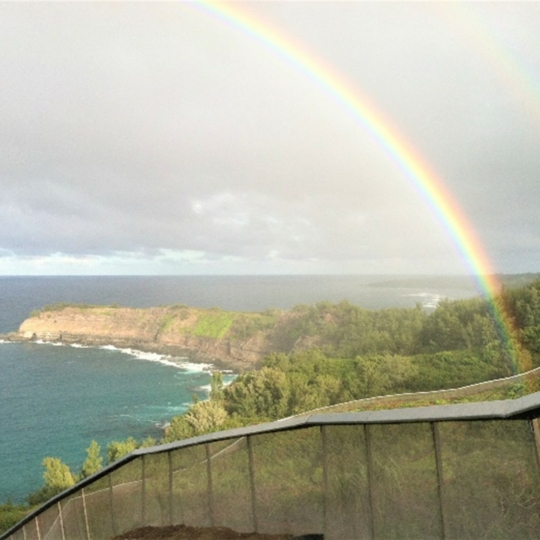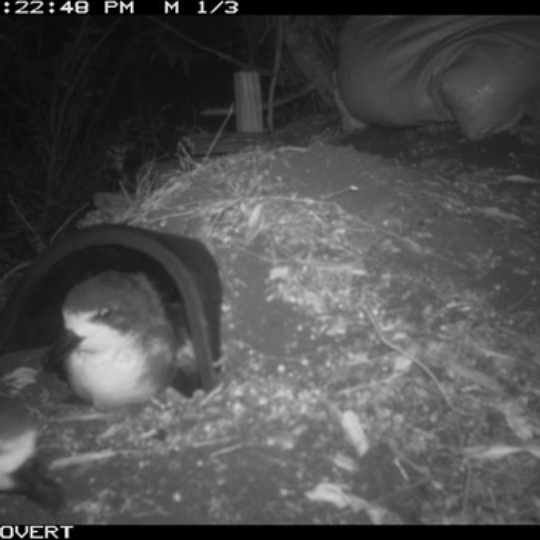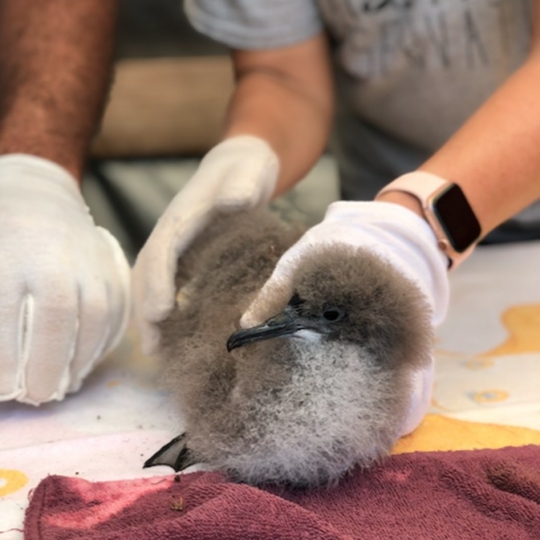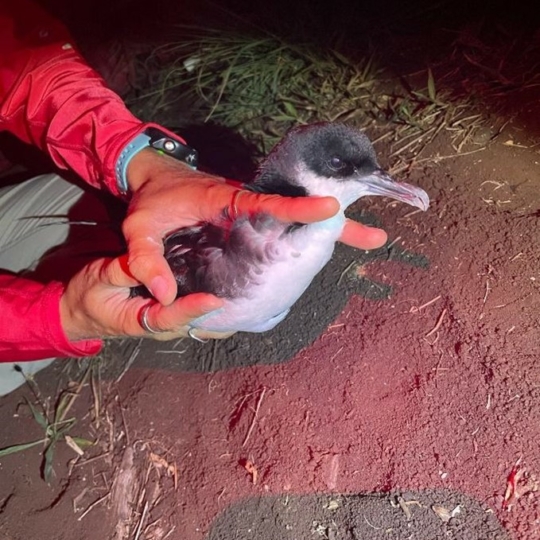Nihoku Ecosystem Restoration Project
Project website: www.nihoku.org
Partners: Kauai Endangered Seabird Recovery Project, U.S. Fish and Wildlife Service, American Bird Conservancy, Hawaii Department of Land and Natural Resources, National Fish and Wildlife Foundation, and National Tropical Botanical Garden.
Created in 2012 and located at Kilauea Point National Wildlife Refuge on Kauai, the Nihoku Ecosystem Restoration Project’s mission is to establish the first fully protected colony of Newell’s Shearwaters and Hawaiian Petrels in Hawaii. These are Hawaii’s only endemic seabird species and are both listed under the Endangered Species Act of 1973. Causes of their declines include habitat degradation, invasive plants, predation by feral cats, pigs, rats, and introduced Barn Owls, and collisions with power lines and structures exacerbated by light attraction.
To create a protected colony of these species, we built a 2400 foot-long predator-proof fence enclosing approximately eight acres at Nihoku in late 2014, and we eradicated all mammalian predators shortly afterwards. Since 2015, we have cleared non-native vegetation from 75% of the fenced area (~4 acres) and planted more than 16,000 native plants representing 30 species to begin restoring the habitat.
From 2012-2020, potential source colonies of Newell’s Shearwaters and Hawaiian Petrels were located by the Kauai Endangered Seabird Recovery Project at locations around Kaua`i. In 2020, 20 Newell’s Shearwaters and 20 Hawaiian Petrels were translocated into the site and all but one of the Hawaiian Petrels fledged. Since translocation began in 2015, 194 listed seabirds have fledged from this site for a success rate of over 98% for the project. Eight translocated Hawaiian petrels and one pair of Newell’s Shearwaters now nest and roost at Nihoku. Of the eight Hawaiian Petrels, there were three pairs including two that have hatched chicks. This marks the final and most important milestone of this project, to create the first predator-free breeding colonies of these two species in the Hawaiian Islands.




